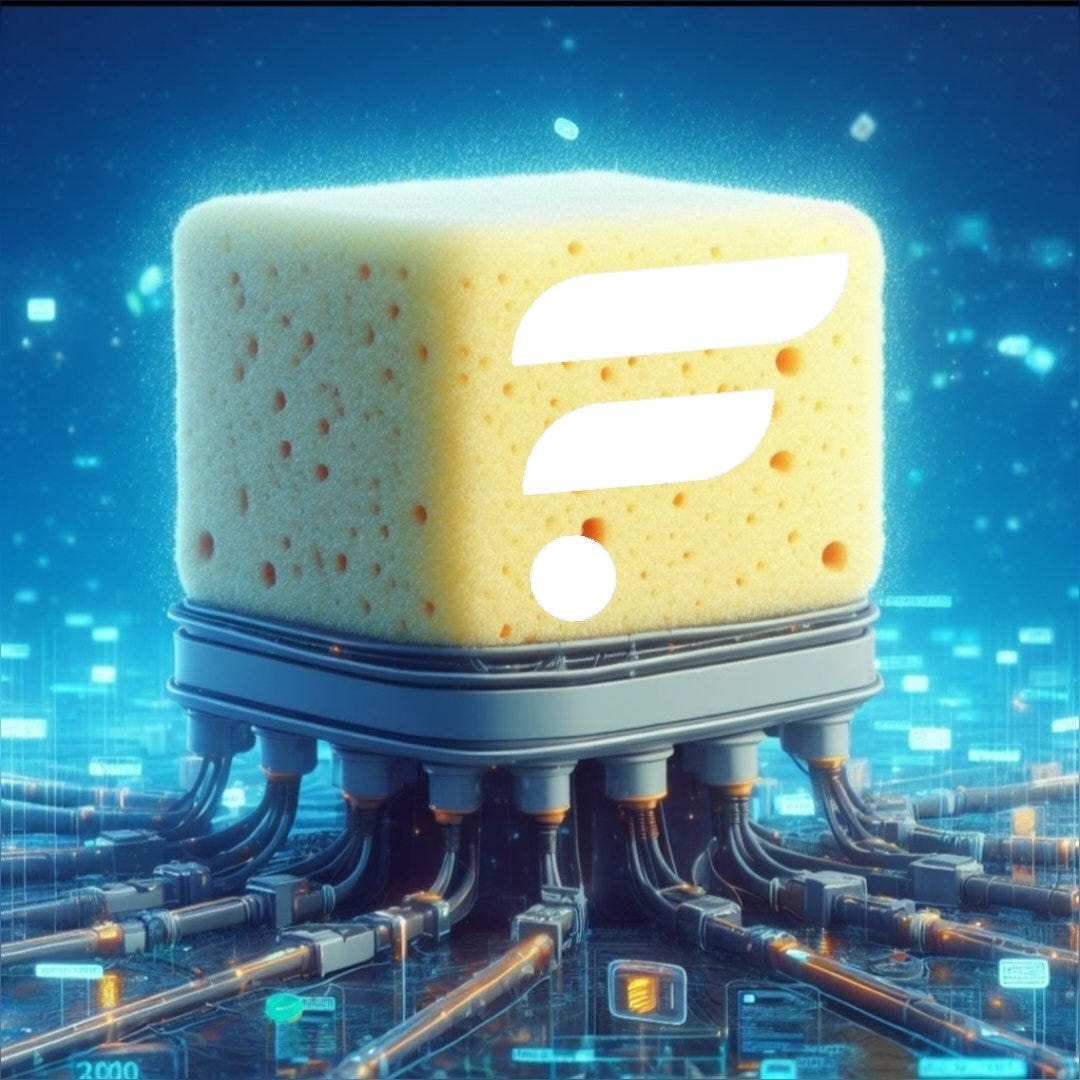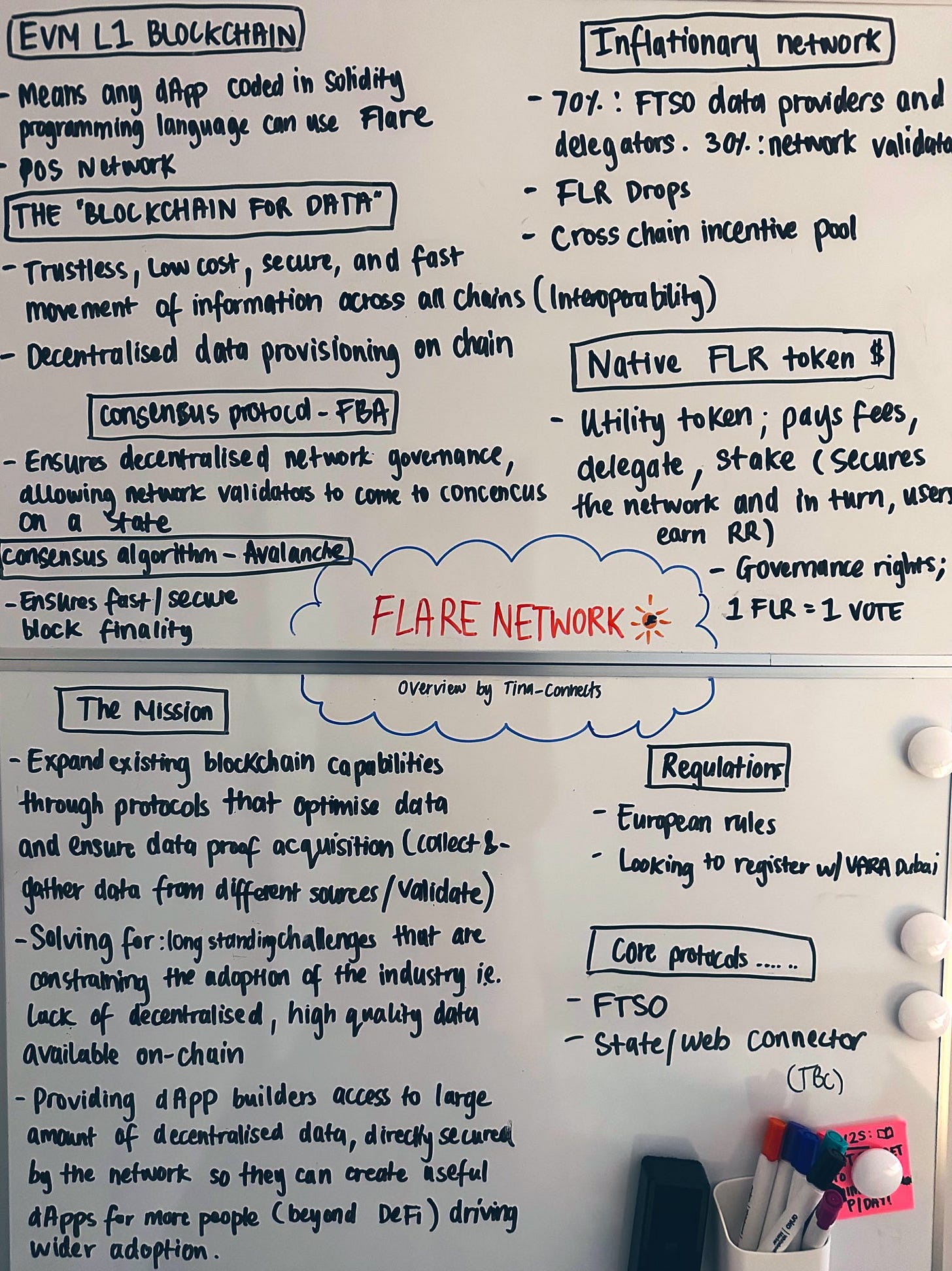
Flare acts like a colossal sponge absorbing data from various blockchains and Web 2 sources. It will become the primary hub for decentralised data, addressing challenges that currently limit the industry's widespread adoption.
Flare Basics:
An EVM L1 blockchain, meaning and dApp coded in solidity programming language can use Flare
Proof-Of-Stake consensus mechanism
Inflationary network: 70% of network inflation goes towards incentivising FTSO data providers and its delegators. The other 30% goes to the network validators. Don’t forget to consider the monthly FlareDrops/ CCI pool.
The Mission:
To be able to expand existing blockchain capabilities through protocols that optimise data and ensure data proof acquisition. Flare enables devs access to large amounts of decentralised data, that is directly secured by the network so they can build 'useful' dApps.
Blockchain for Data:
Data provisioning refers to the process of providing access to and delivering data to users/apps. Based on scalable data provisioning on Flare, it aims to supply time series data, prices and indices, blockchain state and Web 2 data in a decentralised manner.
Data as a Public Good:
This high quality information (mentioned above) will be able to move seamlessly, trustlessly, securely, and at a low cost across various chains further enhancing interoperability.
Native token $FLR:
FLR token plays a crucial role in facilitating network operations and incentivising participation. FLR serves as a utility token for native payments, delegation of vote power with the FTSO and governance protocols (1FLR=1VP) and staking to secure the network.
Regulations:
Flare aims to be compliant with European rules and is considering registration under VARA in Dubai. https://vara.ae/en/ I heard CEO Hugo Philion talk about this in an interview with Defiant during Token2049 and (2023). Lots of golden nuggets in the interview - view below:
Flare Consensus Protocol:
Flare Network uses a new version of a consensus method called Federated Byzantine Agreement (FBA). This method helps nodes in the network trust each other, ensuring the network's security.
Consensus Algorithm:
Additionally, Flare utilises the Avalanche Snowman++ algorithm to achieve fast and secure block finality. The combination of FBA and the Snowman++ algorithm establishes a robust foundation for a secure and decentralised platform.
End.
Some of you reading might already know that I follow Flare Networks very closely and provide education to the community - learning and sharing as I go. I don’t like to speculate on prices and I remain a neutral community member. No hype and facts based only. Give my X a follow for more original tweet threads and thoughts. Linked here.
Have a good one!
Bonus: Here’s the real shocking version of me learning, garage style.





I think E=mc2 was also garage style